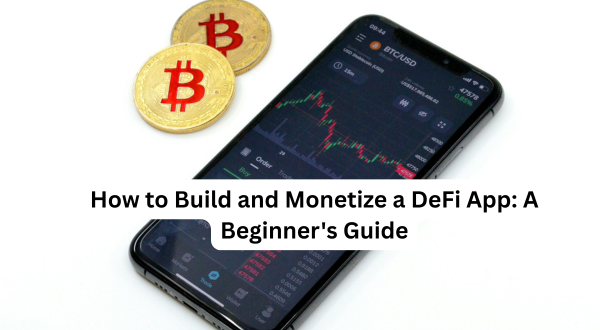Decentralized Finance (DeFi) is one of the most disruptive innovations to emerge from the blockchain space. With over $100 billion once locked in DeFi protocols and a growing number of users seeking alternatives to traditional banking, there’s never been a better time to build your own DeFi app.
In this guide, we’ll walk you through the key steps to build and monetize a DeFi app—even if you’re just getting started.
🚀 What Is a DeFi App?
A DeFi (Decentralized Finance) app is a blockchain-based application that provides financial services—like lending, borrowing, trading, or earning interest—without intermediaries like banks or brokers. These apps use smart contracts to automate transactions and ensure transparency.
Popular examples include:
- Uniswap (decentralized exchange)
- Aave (lending/borrowing)
- Compound (interest-earning protocol)
🛠 Step 1: Choose Your DeFi Niche
Start by picking the problem you want to solve or the service you want to offer:
- Lending/Borrowing – Let users earn interest or take loans using crypto collateral.
- DEX (Decentralized Exchange) – Allow users to swap tokens with liquidity pools.
- Yield Farming – Help users maximize returns by staking tokens.
- Synthetic Assets – Let users create or trade tokenized real-world assets.
Focus is key. Start with a single offering before expanding.
💡 Step 2: Design the Architecture
A typical DeFi app consists of:
- Frontend – Built with React.js or Vue.js for the user interface.
- Smart Contracts – Built using Solidity (Ethereum), Rust (Solana), or Move (Aptos/Sui).
- Blockchain Integration – Web3 libraries like ethers.js or web3.js connect the frontend to smart contracts.
- Wallet Support – Integrate MetaMask or WalletConnect for user authentication.
Tip: Use testnets like Goerli (Ethereum) to test your app without real funds.
🧠 Step 3: Develop and Test Smart Contracts
You’ll need to write and deploy smart contracts to a blockchain platform. Common tools:
- Solidity – Ethereum smart contracts
- Remix – Online IDE for Solidity
- Hardhat or Truffle – Dev frameworks with local testing
Security is critical. Use tools like:
- OpenZeppelin – Pre-audited smart contract libraries
- Slither – For static code analysis
💰 Step 4: Monetization Strategies
There are multiple ways to earn from your DeFi app:
1. Transaction Fees
Charge a small fee for every swap, loan, or trade. Example: Uniswap charges 0.3% per trade.
2. Protocol Tokens
Create your own governance or utility token. Users earn it by using the app. Token value may increase with adoption.
3. Yield Optimization
Earn a portion of the yield generated through farming or staking services you offer.
4. Premium Features
Offer extra tools, analytics, or faster services behind a paywall.
5. Liquidity Provider Incentives
Charge LPs a small fee to join high-yield pools or access better exposure.
📈 Step 5: Launch and Promote
Once your DeFi app is tested and audited:
- Deploy it to mainnet.
- Announce your launch on platforms like Product Hunt, Twitter/X, Reddit, and crypto forums.
- Build a community via Discord or Telegram.
- Apply to DeFi launchpads or accelerators for early exposure.
🛡 Security Note
DeFi apps are frequent targets for hacks. Always:
- Get your smart contracts audited.
- Limit admin privileges.
- Use time locks for sensitive functions.
- Be transparent with users about risks.
🔚 Final Thoughts
Building a DeFi app is more than just writing smart contracts—it’s about creating trustless systems people can rely on. With the right niche, solid architecture, and smart monetization, your app could become the next major player in the decentralized economy.
Start small, test thoroughly, and always put security first.
 UBUCH ubuch | Honest Tech Reviews & Tutorials for Everyone
UBUCH ubuch | Honest Tech Reviews & Tutorials for Everyone




